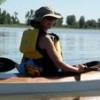Sign in to follow this
Followers
0

Age Info and advice on rebuilding W.R. Thompson saddle
By
wyldflower, in Saddle Identification, Restoration & Repair

By
wyldflower, in Saddle Identification, Restoration & Repair